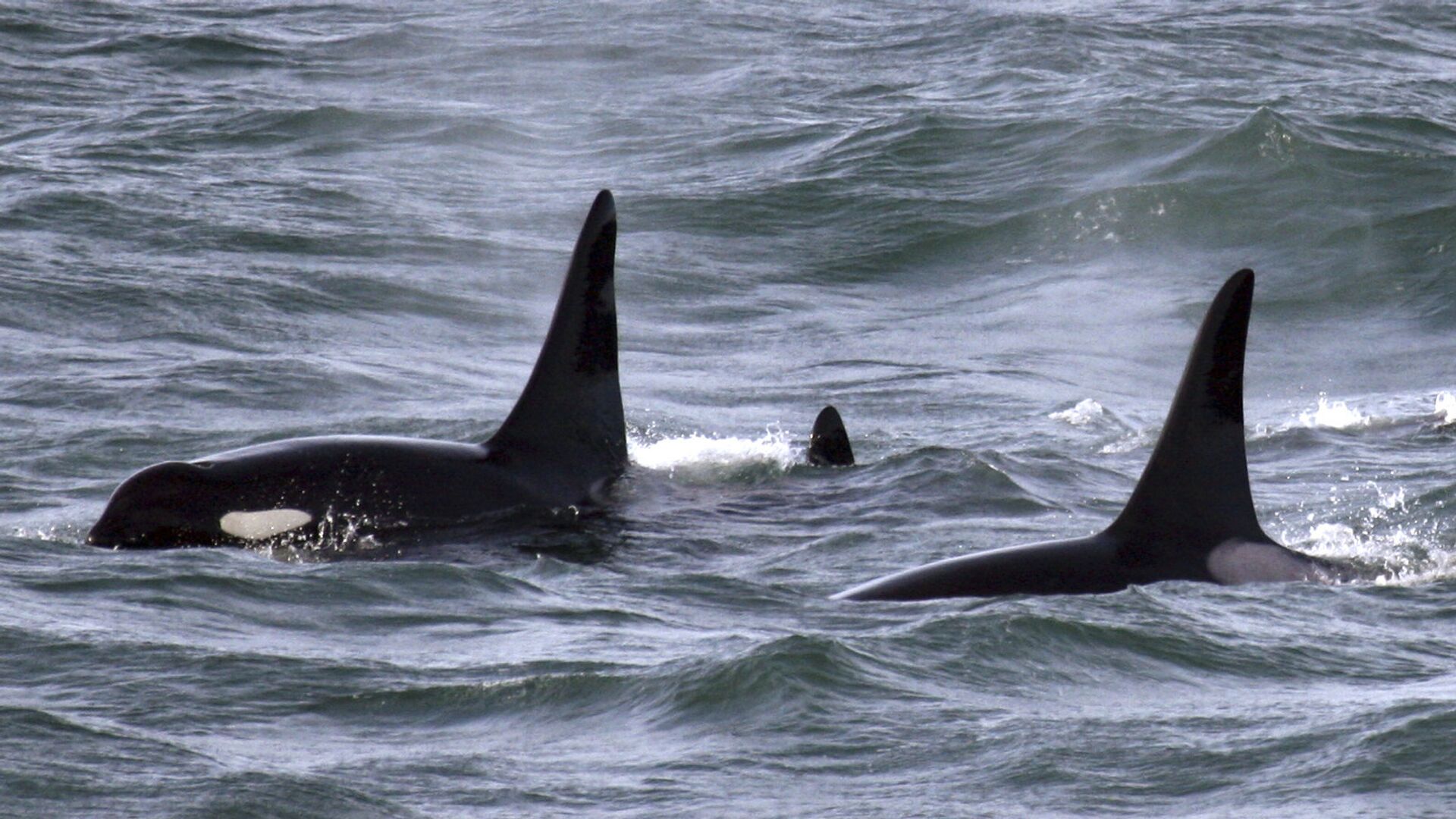https://sputnikglobe.com/20230305/thar-she-blows-study-reveals-how-toothed-whales-vocalize-through-nose-1108071627.html
Thar She Blows! Study Reveals How Toothed Whales Vocalize Through Nose
Thar She Blows! Study Reveals How Toothed Whales Vocalize Through Nose
Sputnik International
The sound-producing system toothed whales possess apparently allows these creatures to create driving pressure powerful enough to produce "the loudest sounds of any animal on the planet.”
2023-03-05T16:07+0000
2023-03-05T16:07+0000
2023-03-05T16:08+0000
science & tech
sea creature
sound
production
system
study
https://cdn1.img.sputnikglobe.com/img/105335/03/1053350366_13:0:1593:889_1920x0_80_0_0_0a4cb0a16fb6b84330ab001acfa4b8a0.jpg
A team of researchers has discovered how toothed whales manage to produce incredibly powerful sounds that help them track down prey deep underwater.The new study, published earlier this week, suggested that the whales possess a "sound production system based on air driven through nasal passages" that is similar in function to "laryngeal and syringeal sound production."Professor Peter Madsen from the Aarhus University in Denmark, one of the authors of the study, has explained that evolution led to this sound-producing system being moved from toothed whales’ trachea into the nose, "which allowed much higher driving pressures - up to five times what a trumpet player can generate - without damaging lung tissues."The research also highlighted how toothed whales manage to echolocate their prey hundreds of meters underwater by using vocal fry, one of the three voice registers they have.
Sputnik International
feedback@sputniknews.com
+74956456601
MIA „Rossiya Segodnya“
2023
Sputnik International
feedback@sputniknews.com
+74956456601
MIA „Rossiya Segodnya“
News
en_EN
Sputnik International
feedback@sputniknews.com
+74956456601
MIA „Rossiya Segodnya“
Sputnik International
feedback@sputniknews.com
+74956456601
MIA „Rossiya Segodnya“
toothed whales, whale echolocation
toothed whales, whale echolocation
Thar She Blows! Study Reveals How Toothed Whales Vocalize Through Nose
16:07 GMT 05.03.2023 (Updated: 16:08 GMT 05.03.2023) The sound-producing system toothed whales possess apparently allows these creatures to create driving pressure powerful enough to produce "the loudest sounds of any animal on the planet.”
A team of researchers has discovered how toothed whales manage to produce incredibly powerful sounds that help them track down prey deep underwater.
The new
study, published earlier this week, suggested that the whales possess a "sound production system based on air driven through nasal passages" that is similar in function to "laryngeal and syringeal sound production."
Professor Peter Madsen from the Aarhus University in Denmark, one of the authors of the study, has explained that evolution led to this sound-producing system being moved from toothed whales’ trachea into the nose, "which allowed much higher driving pressures - up to five times what a trumpet player can generate - without damaging lung tissues."
"This high driving pressure allows toothed whales to make the loudest sounds of any animal on the planet," added his co-author, Professor Coen Elemans from the University of Southern Denmark.
The research also highlighted how toothed whales manage to echolocate their prey hundreds of meters underwater by using vocal fry, one of the three voice registers they have.
"During vocal fry, the vocal folds are only open for a very short time, and therefore it takes very little breathing air to use this register," said Elemans, with Madsen noting how "this air-economy makes it especially ideal for echolocation."

